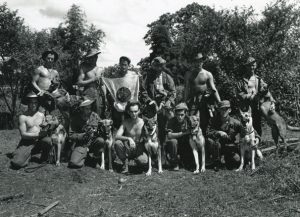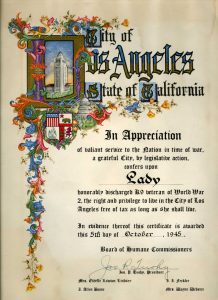 Most of us think of dogs as pets, and so they are, but they are so much more. Dogs know when their master is sick, lonely, or worried. Dogs ask little of their masters, and give so much back, but there is a group of dogs who are working dogs. In fact, we often see dogs in everyday life and think little of their presence, when in fact, their work is vital to those they work for. One of the most well known working dog groups is the K-9 Units. We think of these dogs as police dogs, and so they are, but originally, the K-9 Corps were founded in World War II. Of course, dogs were used long before that war, but not in the capacity of World War II.
Most of us think of dogs as pets, and so they are, but they are so much more. Dogs know when their master is sick, lonely, or worried. Dogs ask little of their masters, and give so much back, but there is a group of dogs who are working dogs. In fact, we often see dogs in everyday life and think little of their presence, when in fact, their work is vital to those they work for. One of the most well known working dog groups is the K-9 Units. We think of these dogs as police dogs, and so they are, but originally, the K-9 Corps were founded in World War II. Of course, dogs were used long before that war, but not in the capacity of World War II.
The Romans used dogs in battles, sending them in to attack the enemy. Native Americans used them as pack animals, as well as sentry animals. Even in the Middle Ages, dogs were sent into battle equipped with their own armor. Modern European societies had long established traditions of using dogs in war. But, I think that their use was probably made most famous 77 years ago, when in January of 1942, Dogs for Defense, Inc. was established as a national organization to help procure dogs for war training purposes. Although some dogs were acquired through purchase, it was largely through the dog owner population’s patriotic sentiments that most dogs were acquired for training. That really amazes me. I understand patriotism, and how people would volunteer in the service, but it seems strange to me to volunteer your dog.  Nevertheless, they did. It was the job of Dogs For Defense not only to procure the dogs, but also to train them. Once trained, the dogs were to be given to the Quartermaster General, who then turned them over to the Plant Protection Branch and Inspection Division. Many thought the primary use of dogs would be as sentries for civilian war plants and quartermaster depot, but dogs have proven to be a much more.
Nevertheless, they did. It was the job of Dogs For Defense not only to procure the dogs, but also to train them. Once trained, the dogs were to be given to the Quartermaster General, who then turned them over to the Plant Protection Branch and Inspection Division. Many thought the primary use of dogs would be as sentries for civilian war plants and quartermaster depot, but dogs have proven to be a much more.
There are dogs that can sniff out drugs, gun powder…and the enemy. The DFD trained over 10,000 dogs. Most of the dogs were used at home for sentry duty, however, more than 1,800 dogs were sent into combat starting in 1942. The US Marine Corps sent over 1,000 dogs to be trained at their Camp Lejeune facility. Unfortunately, many commanders were unfamiliar, and maybe a little distrusting of the dogs, and didn’t know how to use them to their advantage. Seven Quartermaster Corps War Dog Platoons were sent to the European Theatre of Operations, but they did not have much success, probably due mostly to the lack of training with their handlers. In 1943, the QMC sent a detachment of six scout dogs and two messenger dogs to operate in the  Pacific Theatre. This was a test of their value in combat conditions. The Japanese troops had deeply entrenched themselves on many islands in the Pacific theater of operations. Thousands were hiding in caves and in the dense jungles. They would lie very still, in wait for patrolling Marines and soldiers and then ambush them before the troops ever detected enemy forces. This is where the dogs proved their value. The first war dog platoons took to the Pacific island of New Britain. Here Marine war dogs attached to the Sixth Army first worked on sentry duty. Once a beachhead was established the dogs and handlers began conducting their patrols. They went on forty-eight patrols in fifty-three days. The dog patrols captured or killed 200 Japanese soldiers. This early success of war dog platoons set the standard for what could be expected, and what could not, from a K-9 detachment. I think that the more training given to both dogs and handlers, the better the results will be, as we have seen in K-9 police dogs in modern times.
Pacific Theatre. This was a test of their value in combat conditions. The Japanese troops had deeply entrenched themselves on many islands in the Pacific theater of operations. Thousands were hiding in caves and in the dense jungles. They would lie very still, in wait for patrolling Marines and soldiers and then ambush them before the troops ever detected enemy forces. This is where the dogs proved their value. The first war dog platoons took to the Pacific island of New Britain. Here Marine war dogs attached to the Sixth Army first worked on sentry duty. Once a beachhead was established the dogs and handlers began conducting their patrols. They went on forty-eight patrols in fifty-three days. The dog patrols captured or killed 200 Japanese soldiers. This early success of war dog platoons set the standard for what could be expected, and what could not, from a K-9 detachment. I think that the more training given to both dogs and handlers, the better the results will be, as we have seen in K-9 police dogs in modern times.


Leave a Reply